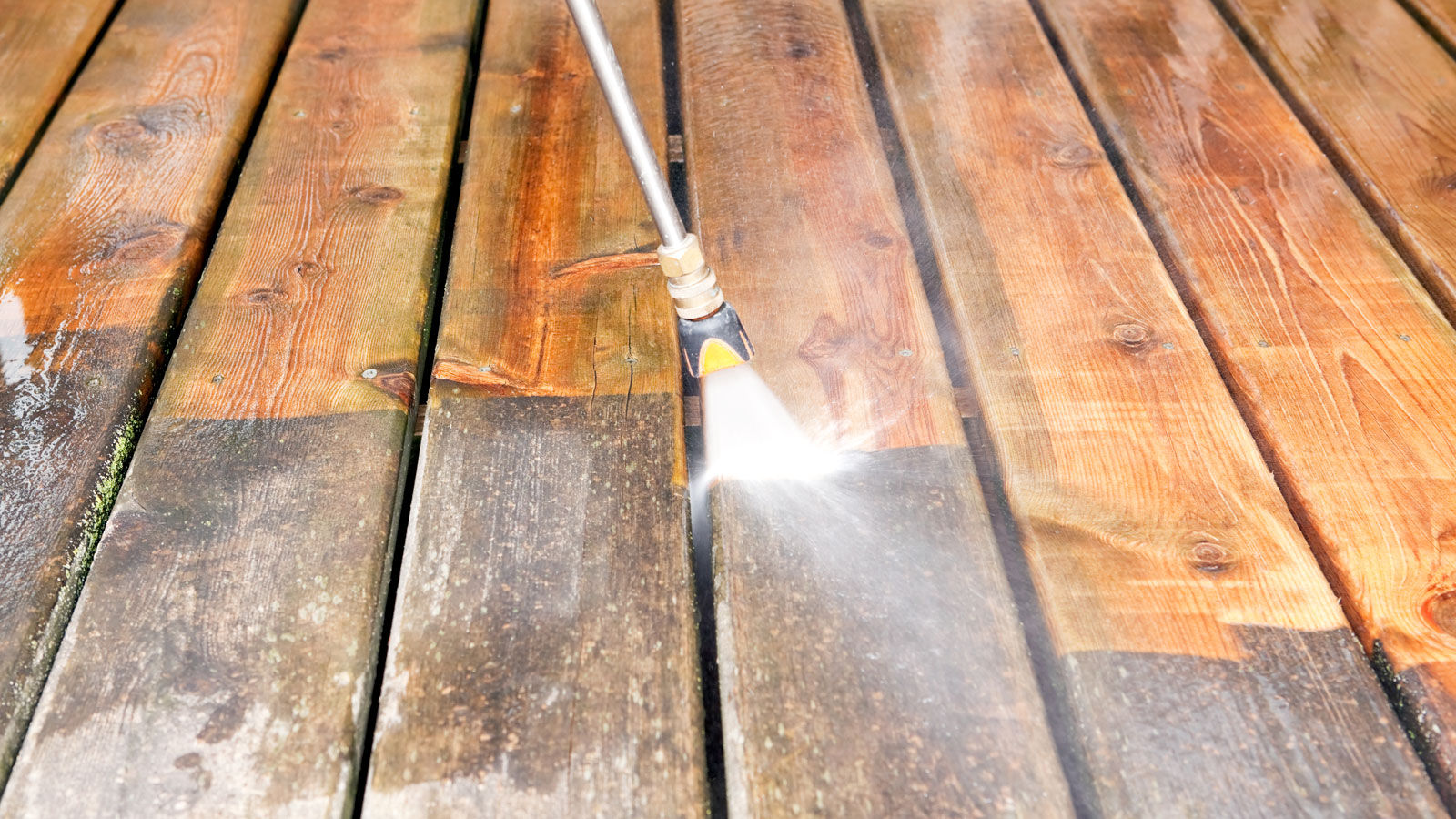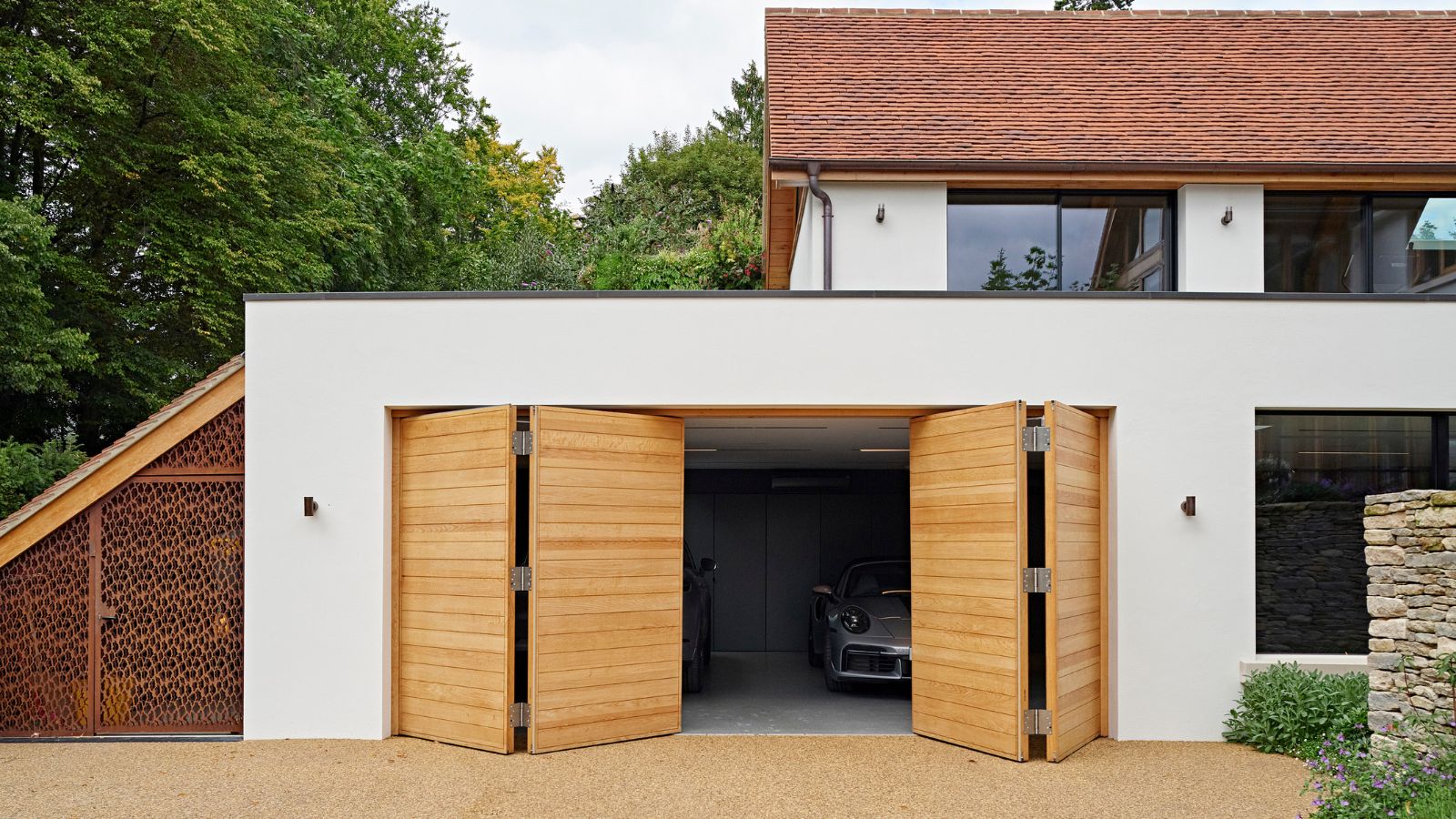Experts reveal why you shouldn't use a pressure washer on a deck — but also when you can
There are a few reasons why you shouldn't use a pressure washer on a deck. But used correctly, it can do a good job. Here, the pros tell you how

If you are wondering why you shouldn't use a pressure washer on a deck, we have the answer. But, it's not as simple or straightforward as you might think. There are scenarios where using a pressure washer on your deck is a poor choice. But then there are scenarios when it can be used, if used correctly.
It’s essential you get it right; otherwise, your recently implemented garden decking ideas could be ruined. Here, the pros give you the lowdown on when you should avoid pressure washing a deck and the reasons why, plus how to use a pressure washer on a deck correctly.

Henrique possesses extensive expertise in the cleaning industry, having progressed from an office cleaner to managing diverse cleaning projects since 2010. He understands the nuances of surface material preservation and the importance of choosing suitable methods to prevent damage and maintain integrity.
Why you shouldn't use a pressure washer on a deck
You can use a pressure washer on decking, but you need to be careful. As Henrique Conceicao, Area Manager at Total Clean, explains, “Using a pressure washer on decking can be an easy fix for cleaning, but if you’re not careful, it can cause a lot of problems.”
High pressure is not a good choice for timber decking, as Conceicao continues: “High pressure can strip away protective coatings, leaving the wood exposed and vulnerable to water damage, which can lead to rotting or splintering.” He adds, “It can also cause the wood to swell if too much water gets absorbed.”
Composite decking won’t have the same problems as timber decking, but it will have issues with high pressure. Conceicao says, “Composite decks are generally more resistant, but even they can lose their shine or show visible streaks if the pressure’s too high.”
But there are definitely times when you should not use a pressure washer on decking, as Conceicao shares, “If the wood is old or untreated, you’re risking causing more damage.” He adds, “It’s also best to avoid pressure washing during extreme weather - especially in the cold, because water that seeps in can freeze and crack the deck.”
Loose boards are another issue. Conceicao says, “If your deck has loose boards, nails, or damaged areas, pressure washing can make it worse.”
When to use a pressure washer on decking
You can use a pressure washer on decking, but it needs to be used properly to prevent damage. Jimmy Englezos, Senior Brand Manager at Ronseal, warns, “It must be done so with great care as it can damage the wooden fibres.” He adds, “If the decking is already slightly splintered the pressure of the water can cause even greater damage, splitting the deck further or chipping off more pieces.”
Englezos says, “A low pressure setting of around 110 Bar, or 1,500 PSI, should be used.” He adds, “When using a pressure washer, make sure it is on a low setting and you never place the nozzle closer than six inches to the decking surface.”
The best way to use the best pressure washers is to start on one side of the deck and move to the other side, following any grooves. Englezos adds a word of caution, “Make sure you are happy with the water pressure before cleaning the entire decking. If you change the pressure throughout, you will end up with different finishes across the decking.”

Jimmy is the Senior Brand Manager at Ronseal, the UK's number one woodcare brand. Jimmy regularly provides insights and guidance on how to properly prepare wood for treatment, as well as handy tips and hints for general woodcare projects.
Try these to keep your decking looking good

The stiff durable bristles and long handle of the scrub brush are ideal as part of the deck cleaning process. Keeping it company is a small crevice brush.
How to pressure wash decking
When your decking needs cleaning, you need to prepare it before you use a pressure washer. Englezos says, “A good clean will remove any accumulated dirt and prepare the surface for cleaning.” He adds, “It’s best to use a stiff brush to remove dirt, grime and any mould that may be settled on your decking.”
A specialist cleaner is needed to help clean the decking. Conceicao says, “When it comes to cleaners, I’d recommend looking for something gentle, designed for outdoor decking.” He adds. “For timber, a mild wood cleaner or one that’s safe for pressure washing is ideal. For composite, a non-abrasive cleaner that can remove dirt and stains without affecting the finish works best.”
Harsh chemicals should be avoided, as Conceicao shares, “It’s a good idea to avoid harsh chemicals, as they may strip the surface and cause fading over time.”
Englezos suggests following the steps below:
1. Prep and brush
First, “Move any pots and furniture off the decking surface and cover any nearby plants,” says Englezos. Next, “Using a soft-bristled brush, brush away any excess dirt and debris.”
2. Add cleaner and pressure wash
Englezos says, “Pour the decking cleaner directly onto the surface and scrub using a clean brush. Leave the cleaner to work for 15-20 minutes to lift off the dirt.” He adds, “Using a pressure washer on a low setting, rinse off the entire decking surface to completely remove the solution.”
FAQ
How often should you pressure wash a deck?
As previously mentioned, a pressure washer should be used sparingly and correctly. Conceicao says, “Aim for two times a year, ideally in spring and after winter. This keeps it fresh and prevents the buildup of dirt, algae, or mildew.”
He adds, “In between those washes, sweeping the deck regularly and using a gentle deck cleaner can help maintain it without the need for constant pressure washing.”
You need to look after decking to ensure its longevity and integrity. Check out our 10 decking maintenance tips and how to make decking non-slip. When your decking finally needs replacing, check out our decking costs guide to help you decide how much to budget for the new deck.
Get the Homebuilding & Renovating Newsletter
Bring your dream home to life with expert advice, how to guides and design inspiration. Sign up for our newsletter and get two free tickets to a Homebuilding & Renovating Show near you.
Steve Jenkins is a freelance content creator with over two decades of experience working in digital and print and was previously the DIY content editor for Homebuilding & Renovating.
He is a keen DIYer with over 20 years of experience in transforming and renovating the many homes he has lived in. He specialises in painting and decorating, but has a wide range of skills gleaned from working in the building trade for around 10 years and spending time at night school learning how to plaster and plumb.
He has fitted kitchens, tiled bathrooms and kitchens, laid many floors, built partition walls, plastered walls, plumbed in bathrooms, worked on loft conversions and much more. And when he's not sure how to tackle a DIY project he has a wide network of friends – including plumbers, gas engineers, tilers, carpenters, painters and decorators, electricians and builders – in the trade to call upon.



